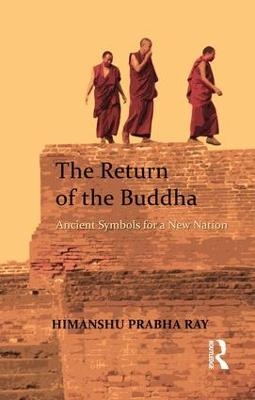
The Return of the Buddha
Ancient Symbols for a New Nation
Seiten
2016
Routledge India (Verlag)
978-1-138-66394-7 (ISBN)
Routledge India (Verlag)
978-1-138-66394-7 (ISBN)
This book traces the impact of archaeological discoveries in colonial India on the reconstruction of India’s Buddhist past and on the making of a public discourse around it. It also discusses the legacy of Buddhism in the post-independence period, particularly the use of Buddhist symbols in nation-building and constitution-making.
The Return of the Buddha traces the development of Buddhist archaeology in colonial India, examines its impact on the reconstruction of India’s Buddhist past, and the making of a public and academic discourse around these archaeological discoveries.
The book discusses the role of the state and modern Buddhist institutions in the reconstitution of national heritage through promulgation of laws for the protection of Buddhist monuments, acquiring of land around the sites, restoration of edifices, and organization of the display and dissemination of relics. It also highlights the engagement of prominent Indian figures, such as Nehru, Gandhi, Ambedkar, and Tagore, with Buddhist themes in their writings.
Stressing upon the lasting legacy of Buddhism in independent India, the author explores the use of Buddhist symbols and imagery in nation-building and the making of the constitution, as also the recent efforts to resurrect Buddhist centers of learning such as Nalanda. With rich archival sources, the book will immensely interest scholars, researchers and students of modern Indian history, culture, archaeology, Buddhist studies, and heritage management.
The Return of the Buddha traces the development of Buddhist archaeology in colonial India, examines its impact on the reconstruction of India’s Buddhist past, and the making of a public and academic discourse around these archaeological discoveries.
The book discusses the role of the state and modern Buddhist institutions in the reconstitution of national heritage through promulgation of laws for the protection of Buddhist monuments, acquiring of land around the sites, restoration of edifices, and organization of the display and dissemination of relics. It also highlights the engagement of prominent Indian figures, such as Nehru, Gandhi, Ambedkar, and Tagore, with Buddhist themes in their writings.
Stressing upon the lasting legacy of Buddhism in independent India, the author explores the use of Buddhist symbols and imagery in nation-building and the making of the constitution, as also the recent efforts to resurrect Buddhist centers of learning such as Nalanda. With rich archival sources, the book will immensely interest scholars, researchers and students of modern Indian history, culture, archaeology, Buddhist studies, and heritage management.
Himanshu Prabha Ray is Chairperson of National Monuments Authority, New Delhi, and former Professor, Centre for Historical Studies (CHS), Jawaharlal Nehru University (JNU), New Delhi.
Preface. Preamble: The Buddha in Twenty-First-Century India 1. Engaging With Buddhism 2. The Search for the Historical Buddha 3. The Empire in the Footsteps of Ashoka 4. Excluded Buddhism 5. Buddhism in Memory and History 6. Buddhism and the Birth of a Nation 7. In Retrospect. Bibliography
| Erscheinungsdatum | 24.01.2016 |
|---|---|
| Verlagsort | London |
| Sprache | englisch |
| Maße | 138 x 216 mm |
| Gewicht | 362 g |
| Themenwelt | Geisteswissenschaften ► Geschichte ► Regional- / Ländergeschichte |
| Geisteswissenschaften ► Religion / Theologie ► Buddhismus | |
| Sozialwissenschaften ► Politik / Verwaltung | |
| Sozialwissenschaften ► Soziologie ► Spezielle Soziologien | |
| ISBN-10 | 1-138-66394-8 / 1138663948 |
| ISBN-13 | 978-1-138-66394-7 / 9781138663947 |
| Zustand | Neuware |
| Haben Sie eine Frage zum Produkt? |
Mehr entdecken
aus dem Bereich
aus dem Bereich
Erinnerungen
Buch | Softcover (2024)
Pantheon (Verlag)
16,00 €
Universalgelehrter, Polarreisender, Entdecker
Buch | Hardcover (2024)
mareverlag
28,00 €


